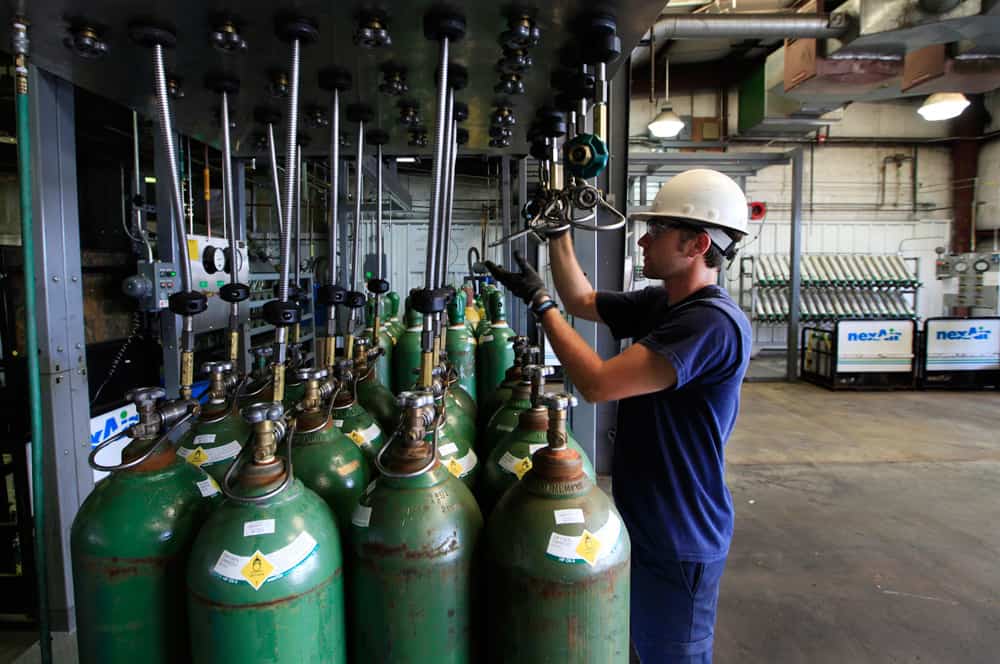The Essential Guide to Using Dry Ice for Shipping Perishables in Hot Weather
Hot weather shipping separates successful logistics operations from those that struggle with seasonal challenges. When temperatures climb above 85°F, every aspect of your cold chain faces increased stress. At nexAir, we’ve developed comprehensive dry ice strategies that help businesses maintain product integrity during the most demanding shipping conditions of the year.
Why Summer Heat Puts Your Cold Chain at Risk
Extreme temperatures create cascading problems throughout the shipping process. Warehouse loading areas without climate control can increase product temperatures before packages leave the dock. Interstate highways through desert regions expose shipments to sustained heat that mechanical cooling systems struggle to overcome. Distribution hubs often experience delays during peak summer volume, extending exposure times beyond original planning estimates.
Vehicle interiors reach dangerous temperatures surprisingly quickly during the summer months. A delivery truck parked in direct sunlight can exceed 130°F within an hour, creating thermal conditions that overwhelm standard cooling methods. These temperature spikes affect more than the immediate shipment—they can damage packaging integrity and compromise insulation effectiveness for the remainder of the journey.
When and Why Dry Ice Makes the Most Sense
Dry ice performs consistently regardless of external conditions because it operates independently of mechanical systems or electrical power. Its sublimation temperature of -109°F creates thermal capacity that withstands temperature assaults that would defeat other cooling methods. This reliability becomes crucial when shipments face unexpected delays or routing changes common during busy summer shipping periods.
The sublimation process provides advantages during hot weather shipping. As dry ice converts to gas, it displaces warm air within containers and creates positive pressure that helps prevent heat infiltration. This self-reinforcing cooling effect works well in properly designed packaging systems that strategically channel the cold gas flow around temperature-sensitive products.
Best Practices for High-Heat Shipping Environments
Packaging design becomes critical when ambient temperatures exceed 90°F. Insulation materials must create barriers that resist thermal penetration while allowing controlled gas venting from dry ice sublimation. Strategic placement of dry ice within containers maximizes cooling efficiency, positioning it to create convection currents that circulate cold air throughout the entire shipment rather than creating isolated cold spots.
Load calculations for summer shipping require different approaches than those for moderate weather conditions. Higher sublimation rates mean more dry ice consumption, but the increased cooling capacity often justifies the additional cost through improved product protection. We help customers balance these factors by analyzing their specific routes, typical delay patterns, and product temperature requirements to determine optimal dry ice quantities for reliable summer performance.
Safety and Compliance Considerations in Warmer Months
Hot weather amplifies safety concerns related to dry ice handling and transportation. Sealed vehicles can accumulate dangerous CO2 concentrations more quickly when sublimation rates increase due to higher ambient temperatures. Proper ventilation becomes even more critical, and handling procedures may need modification to account for accelerated sublimation during loading and unloading operations.
Summer shipping often involves more extended exposure periods and more complex routing that can affect regulatory compliance requirements. DOT regulations for dry ice transportation include quantity limits and labeling requirements that may influence shipping strategies during peak season. We guide maintaining compliance while optimizing cooling performance, helping customers avoid regulatory issues that could disrupt their shipping operations.
Planning with Support You Can Rely On
Successful summer shipping requires proactive planning that begins well before temperatures start climbing. Supply chain modifications, carrier negotiations, and packaging adjustments work best when implemented during off-peak periods rather than as emergency responses to weather-related shipping failures. Our expert KnowHow™ includes helping customers develop seasonal shipping strategies that anticipate challenges rather than reacting to them.
This collaborative approach helps customers Forge Forward with confidence, knowing their dry ice strategies have been tested and refined through multiple summer shipping seasons. Whether you’re preparing for your first summer shipping operation or looking to improve an existing program, nexAir provides the technical expertise and supply reliability that turn seasonal challenges into competitive advantages.
Looking out for your future
Get your career going on the right track with nexAir
Find out how nexAir KnowHow has impacted businesses all over the Southeast
Our expertise makes us more than a valuable partner, it makes us headlines
Don't see what you're looking for?
Everything we offer is a click away and it will arrive before you know it.


